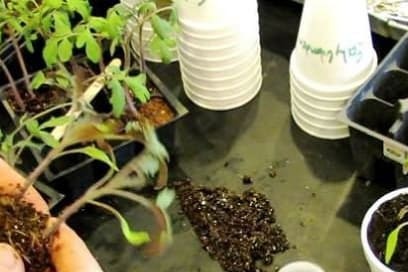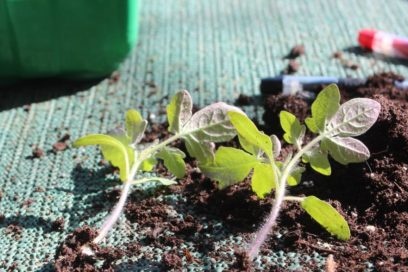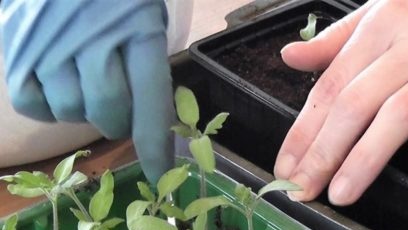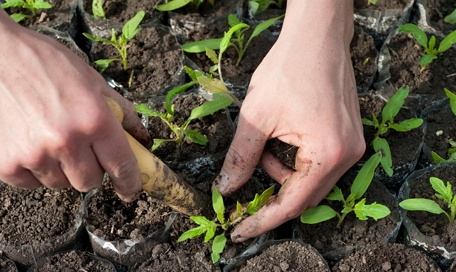Pikivka is a controversial stage of seedling cultivation. Some gardeners urge to abandon it as a useless stage of processing, while others try new methods, getting more healthy planting material
. To determine whether it is necessary to pick for a particular culture, variety, it is necessary to understand its real advantages, existing risks, to separate misconceptions from facts proven by experience.
Myths and Facts
 One well-known misconception: picking damages the roots and slows down subsequent growth. Fact: with the right choice of transplantation time, injuries of the central process are minimal and even necessary. It is necessary to choose the period when the plant has already strengthened the aerial part, but has not yet given lateral roots. Inside the earthen coma there will be no weaves that will have to be disassembled or torn. If you moisten the soil well in advance, use the tools to extract the seedlings, you can completely avoid damage. But one of the goals is to form a strong root system, stimulating the growth of branches. To do this, pinch the central process and bend. Therefore, a pick will be dangerous to the roots only if it is carried out in the wrong period.
One well-known misconception: picking damages the roots and slows down subsequent growth. Fact: with the right choice of transplantation time, injuries of the central process are minimal and even necessary. It is necessary to choose the period when the plant has already strengthened the aerial part, but has not yet given lateral roots. Inside the earthen coma there will be no weaves that will have to be disassembled or torn. If you moisten the soil well in advance, use the tools to extract the seedlings, you can completely avoid damage. But one of the goals is to form a strong root system, stimulating the growth of branches. To do this, pinch the central process and bend. Therefore, a pick will be dangerous to the roots only if it is carried out in the wrong period.
Some believe that picking slows down growth, that is, without it you can get more strong seedlings in the early stages. However, in practice, most gardeners are faced with the problem of overgrowing: plants grow, weak stems bend, and then seedlings poorly take root on the site due to underdeveloped roots. Pikivka solves these problems. After processing, the seedlings cease to nourish the aerial part, all its forces go to the restoration of the root, its growth and strengthening of the stem. It turns out not too tall plant with a dense, elastic stalk, a strong base. These are easier to carry into the ground, they quickly take root, do not require constant garter.
 It is believed that after treatment the seedlings will be sick, and the percentage of dead seedlings will increase. Indeed, treatment can cause infection and even complete withering. However, this is most often associated with:
It is believed that after treatment the seedlings will be sick, and the percentage of dead seedlings will increase. Indeed, treatment can cause infection and even complete withering. However, this is most often associated with:
- failure to meet deadlines;
- improper technique;
- incorrect subsequent soil treatment.
 You may be interested in:
You may be interested in:Seedlings will hurt if you pull them out with your hands, use unclean equipment, do not devote enough time to soil treatment, over the next few weeks. Moreover, timely picking according to the Chinese method will allow you to get twice as many plants.
Benefit or harm
You can not consider picking a mandatory step in growing seedlings or a panacea for all problems with planting material. The procedure has a number of undoubted advantages, with its help you can get rid of the weakest seedlings and significantly improve the indicators of the remaining mass of plants, even increase the total mass of the crop in the long run. But we must not forget that the picks have flaws and limitations. Among the pluses:
- space saving;
- growth control;
- ease of sorting plants;
- ability to change characteristics.
Initially, planting in boxes, rather than in pots, makes it possible to simplify maintenance, reduce the occupied area.After that, during a dive, the gardener can easily find plants with rotten roots, diseased stems, weak leaves. If you remove them on time, the risk of spreading infections, bacteria or fungi to the entire planting material will be significantly reduced. Only picking allows you to change the shape of the future plant. For example, tall tomatoes can be made double-barreled, thereby doubling the amount of yield.
 Among the shortcomings, the risk of large losses due to the incorrect transplantation period, as well as the initial probability of infection of all seedlings due to growing in one container, is noted. You will also have to store more soil in advance, and then find a place for individual pots. Agrotechnics of growing precocious, southern crops often does not involve picking, especially if they are transferred to the open ground early or cultivated in a greenhouse or greenhouse.
Among the shortcomings, the risk of large losses due to the incorrect transplantation period, as well as the initial probability of infection of all seedlings due to growing in one container, is noted. You will also have to store more soil in advance, and then find a place for individual pots. Agrotechnics of growing precocious, southern crops often does not involve picking, especially if they are transferred to the open ground early or cultivated in a greenhouse or greenhouse.
 You may be interested in:
You may be interested in:After weighing all the pros and cons, taking into account the real facts, each gardener can independently decide for which crops to apply this treatment and which not to transfer. It is definitely worth planting, if you need to stop growth, strengthen the roots, if you can immediately place the plants in separate containers, you can completely refuse additional processing.




 Low-growing tomatoes, without pinching: 5 of the most delicious varieties
Low-growing tomatoes, without pinching: 5 of the most delicious varieties Why tomato seedlings grow poorly
Why tomato seedlings grow poorly We grow a tomato in a shell
We grow a tomato in a shell Growing tomatoes without watering according to the method of Kazarin
Growing tomatoes without watering according to the method of Kazarin